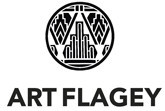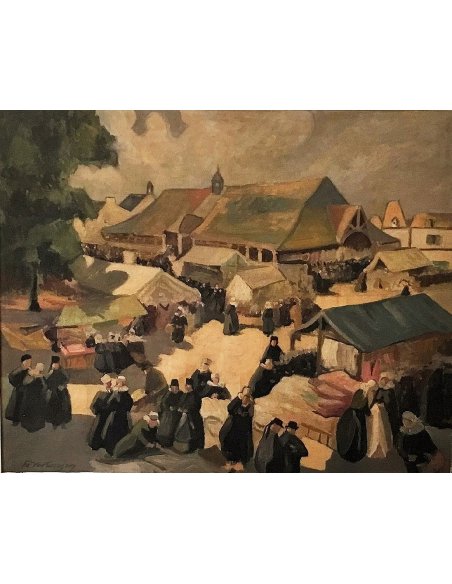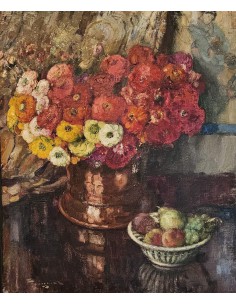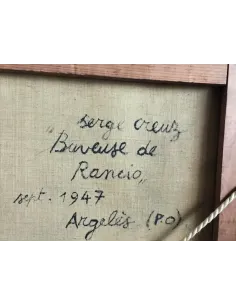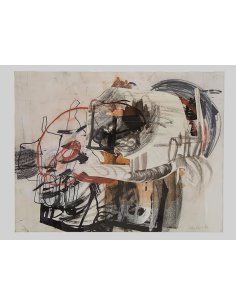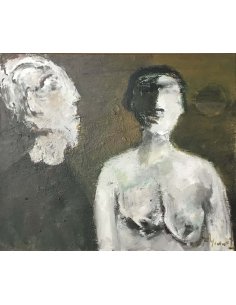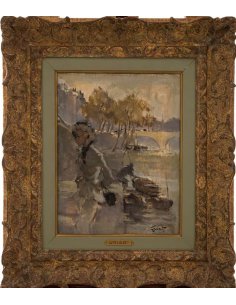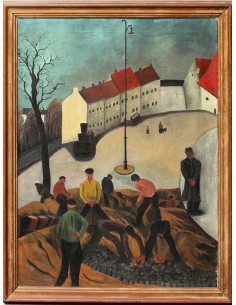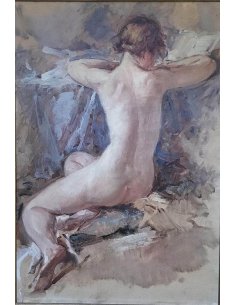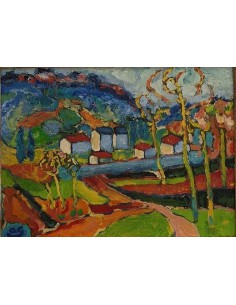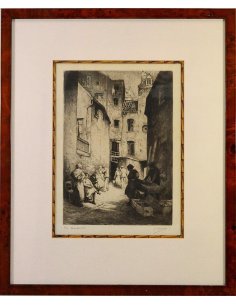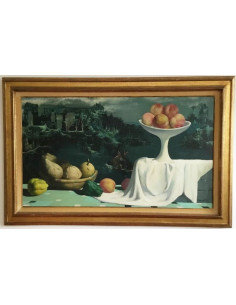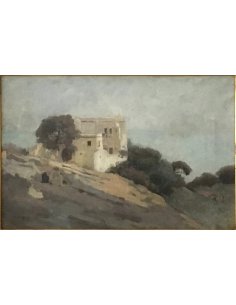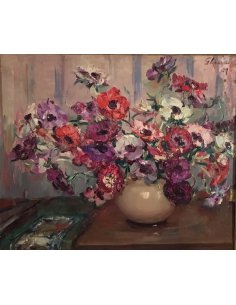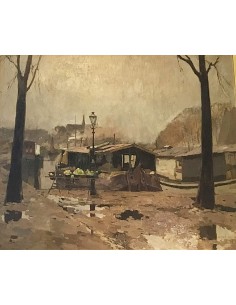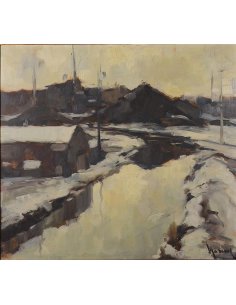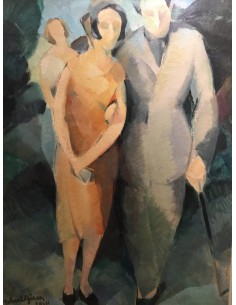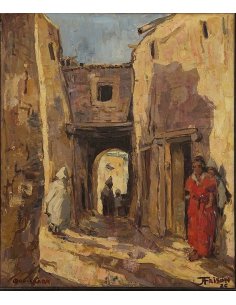Painting by the Belgian artist Frits Vertongen "Marché en Bretagne"
Frits Vertongen's painting "Marché en Bretagne" depicts a lively market scene in the French region of Brittany.
In the lower part of the picture, numerous people, mostly women in traditional Breton costume – dark dresses with white bonnets – are seen standing together in groups, talking, or handling goods. The focal point is the actual market, with several market stalls with simple roofs, beneath which people are crowded. In the background, a large market hall rises. The scene is lively, but the figures are only depicted in silhouette or in a stylized manner, which gives the picture a certain dynamism, but also anonymity.
Vertongen uses muted, earthy colors – many shades of brown, dark green, beige, black, and gray-blue. The style appears Impressionistic or Post-Impressionistic – the forms are not detailed, but rather suggested. The lighting suggests an overcast sky, which lends the painting a subdued, almost nostalgic atmosphere.
The work conveys traditional Breton rural life, focusing on community, everyday life, and peasant trade. The costumes and architecture suggest a bygone era, presumably the early 20th or late 19th century. Vertongen captures not only the scenery but also the atmosphere of a busy market day—quiet yet full of activity.
About the artist:
Frits VERTONGEN (1939–1997)
Frits Vertongen was a Belgian painter who made a name for himself primarily through his atmospheric depictions of rural scenes, markets, and village communities. He was born in Dendermonde, a traditional artists' town in East Flanders, and died in Ghent, one of Belgium's cultural strongholds.
His work is characterized by an Impressionist to Post-Impressionist visual language, with a focus on lighting moods, everyday scenes, and cultural traditions—such as Breton rural life. Vertongen's preferred motifs were people in motion, markets, architecture, and traditional clothing, often rendered in dark, muted colors.
Although Frits Vertongen is not an internationally known name today, his work is recognized in the Flemish art scene. His works have been documented in collections (including Mu.ZEE Ostend) and regularly appear at art auctions.
